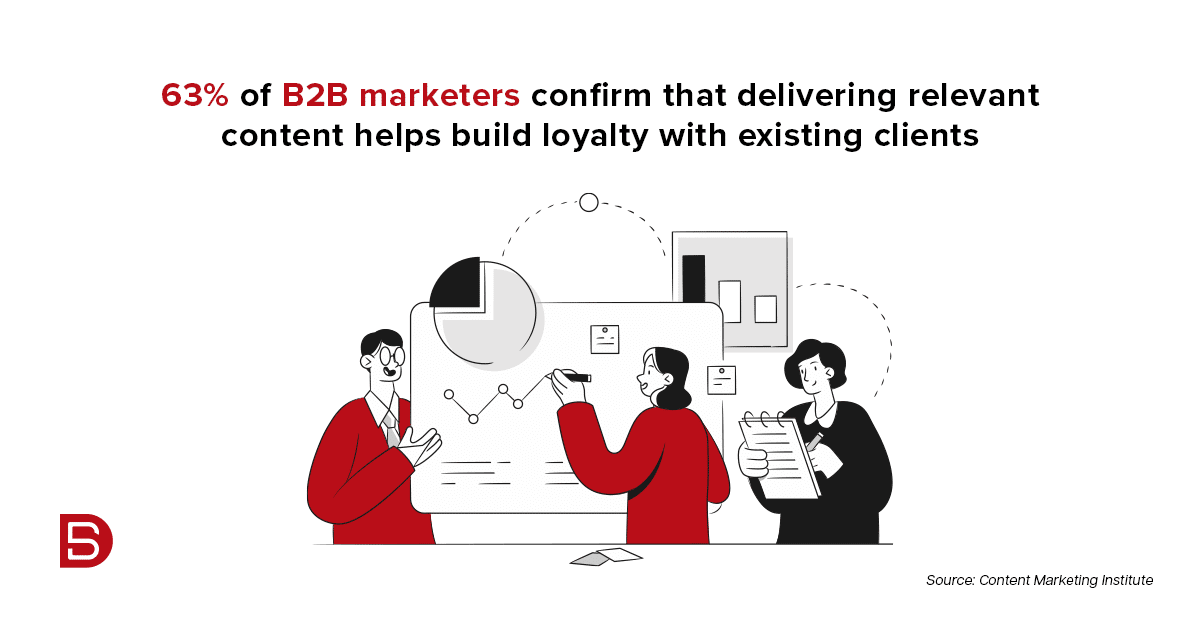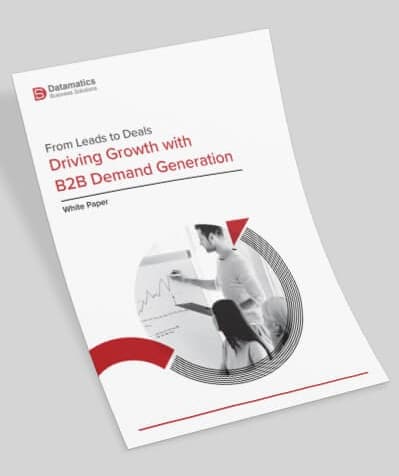Assumptions in lead generation can be like playing darts blindfolded- lots of effort with no bullseye. While relying on gut feelings may have had its heyday, today’s world of fast connections and endless variables demands a sharper strategy for B2B marketing. Are we still throwing darts in the dark, or is there a smarter way to hit the target?
In this blog, we have pinpointed the top assumptions that could throw off your lead generation game. It’s time to ditch the blindfold, challenge those assumptions, and aim for spot-on strategies that are ready to score big. So, let’s get started.
8 Misconceptions That Are Hurting Your Lead Gen Efforts
1. Build a website and get perfect customers in just one month.
(Or maybe not). Simply building a website won’t summon perfect customers who start knocking within the first month. In the B2B world, it’s crucial to get creative with your digital marketing. Don’t sit back and hope they stumble upon your site; actively draw them in.
And if you’re in a niche market with specialized offerings, don’t assume clients will effortlessly discover you. Take charge with proactive marketing strategies that actively reach out to your potential clients rather than waiting for them to find you.
2. Historical strategies will always be relevant.
It’s easy to idolize past strategies that once nailed reaching clients. But here’s the reality check: relying on the same old playbook indefinitely is wishful thinking. What worked wonders in the past can easily slip into guesswork fueled by emotions and assumptions.
Marketing thrives on human connections. As people and societies evolve, so should your strategies. Business is a bit like psychology; it’s all about adapting. Staying flexible ensures you can consistently achieve and scale up your marketing success, staying relevant and innovative in today’s dynamic markets.
3. Cold calling is the King of lead generation.
Well, maybe it’s time to pass the torch! Choosing between cold calling and digital marketing like Google AdWords boils down to short-term gains versus long-term sustainability. While cold calling can quickly boost customer acquisition in the short run, digital strategies such as AdWords and content marketing offer a more enduring presence online.
By investing in your website and online ads to provide valuable information, you not only attract customers but also build a lasting relationship. It helps lay down a foundation for your business online, ensuring you’re not just noticed today but remembered tomorrow.
So, while cold calling has its place, let’s think bigger. Combine these strategies to reach customers effectively and sustainably, ensuring your business stays ahead.
4. People love ignoring Paid Ads.
Many businesses think people actively avoid clicking on paid ads in ‘pay-per-click’ (PPC) advertising, assuming users steer clear of them online. But the reality is while some users put ad blockers (about 30%, according to Business Insider), these tools typically allow ads on Google itself and focus on blocking display ads on other websites.
Infact, paid ads often deliver a higher conversion rate; 1.5 times more effective than organic traffic, according to research from SEOmoz. This shows that paid ads can effectively connect with potential customers actively searching for specific products or services.
Yes, paid ads come with costs, and if clicks don’t convert, it may seem like money wasted. But consider this- every form of digital marketing requires investment, whether it’s SEO-driven content strategies or targeted Google AdWords campaigns. The real question for your business is: which approach will deliver the best return on investment (ROI) and drive growth effectively?
5. Website made=message conveyed.
Creating a website and hoping for visitors is comparable to constructing a McDonald’s in a desert and expecting the drive-through to attract customers. It’s important to note the clear distinction between web development and digital marketing: web development enhances user engagement and experience with your brand, while digital marketing concentrates on bringing targeted and purposeful traffic to your brand. Understanding this contrast and allocating resources accordingly is crucial for achieving success for your brand.
6. More leads is equal to more conversions.
It’s tempting to think that a flood of leads automatically translates into more sales, but that’s not always how it works. Quality beats quantity when it comes to leads. Sure, having a bunch of leads might look impressive, but if they’re not the right fit for your business, they won’t convert into paying customers. This can clog up your sales pipeline without adding much value.
Instead, focus on attracting leads that really resonate with your ideal customer profile (ICP) and are more likely to become loyal customers.
7. When it comes to content, one size fits all.
Long story short, doesn’t work! Each piece of content serves a unique purpose and shouldn’t be treated the same. This becomes clear when you consider how leads in different stages of the buying journey interact with your content. Leads at the beginning of the journey engage differently compared to those who are further along and ready to make a decision.
In today’s B2B world, where buying decisions involve diverse teams, it’s crucial to address the specific needs and challenges of different stakeholders. What resonates with a finance director may not necessarily appeal to a business operations director. Waterfall Content Syndication excels at tailoring content to speak directly to these varied audiences, ensuring your message hits home and doesn’t miss opportunities.
8. Sales and marketing should work in silos.
While sales and marketing may operate as separate teams, they should work together seamlessly. Unfortunately, these departments often do operate in silos, with limited understanding of each other’s roles and contributions.
This divide can lead to mixed messages and a disjointed customer experience. One effective way to bridge this gap is through initiatives like Account-Based Marketing (ABM). ABM encourages collaboration toward shared goals, making aligning strategies easier and enhancing overall lead-generation efforts.
Conclusion
Dispelling these assumptions isn’t just about avoiding mistakes; it’s about always striving to improve and adapt. Efficient lead generation tactics hinges on understanding your audience’s unique needs and behaviors. This requires being innovative, empathetic, and willing to challenge your current content strategies. Remember, successful lead generation tactics comes down to knowing your product, understanding your audience, and navigating the dynamic interplay between them.
Ready to enhance your lead and demand generation efforts? Reach out to us at [email protected] for personalized support and strategies tailored to your business. Let’s elevate your approach together!
 Select an element to maximize. Press ESC to cancel.
Select an element to maximize. Press ESC to cancel.
Kent Wu



